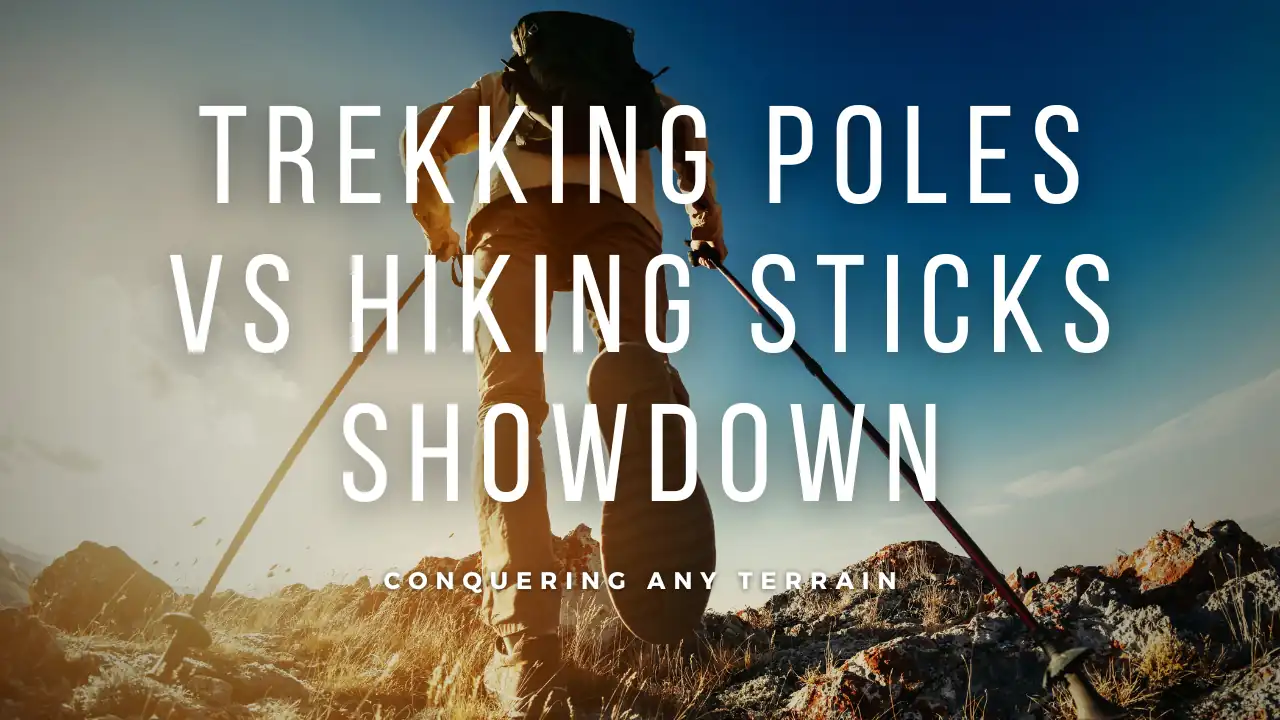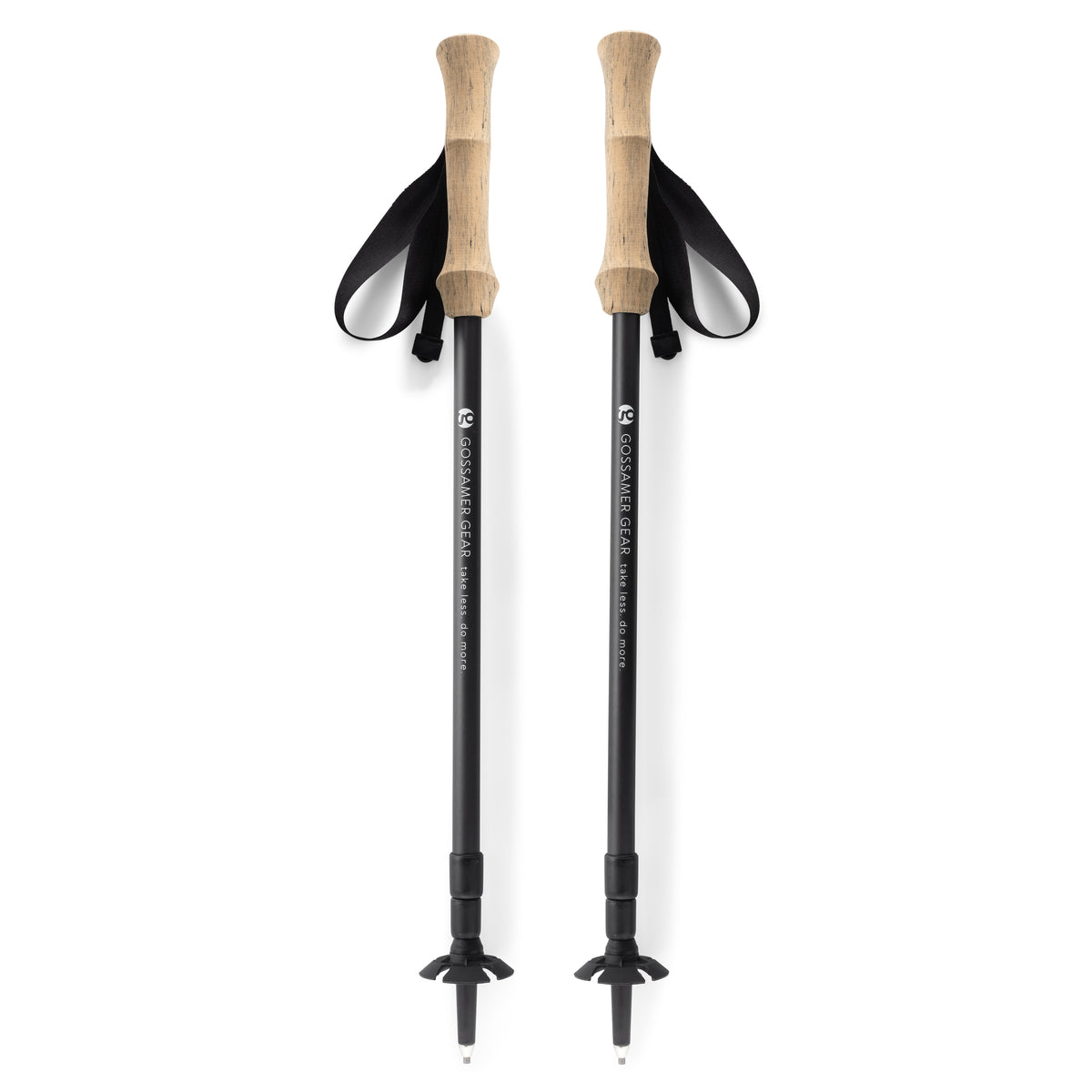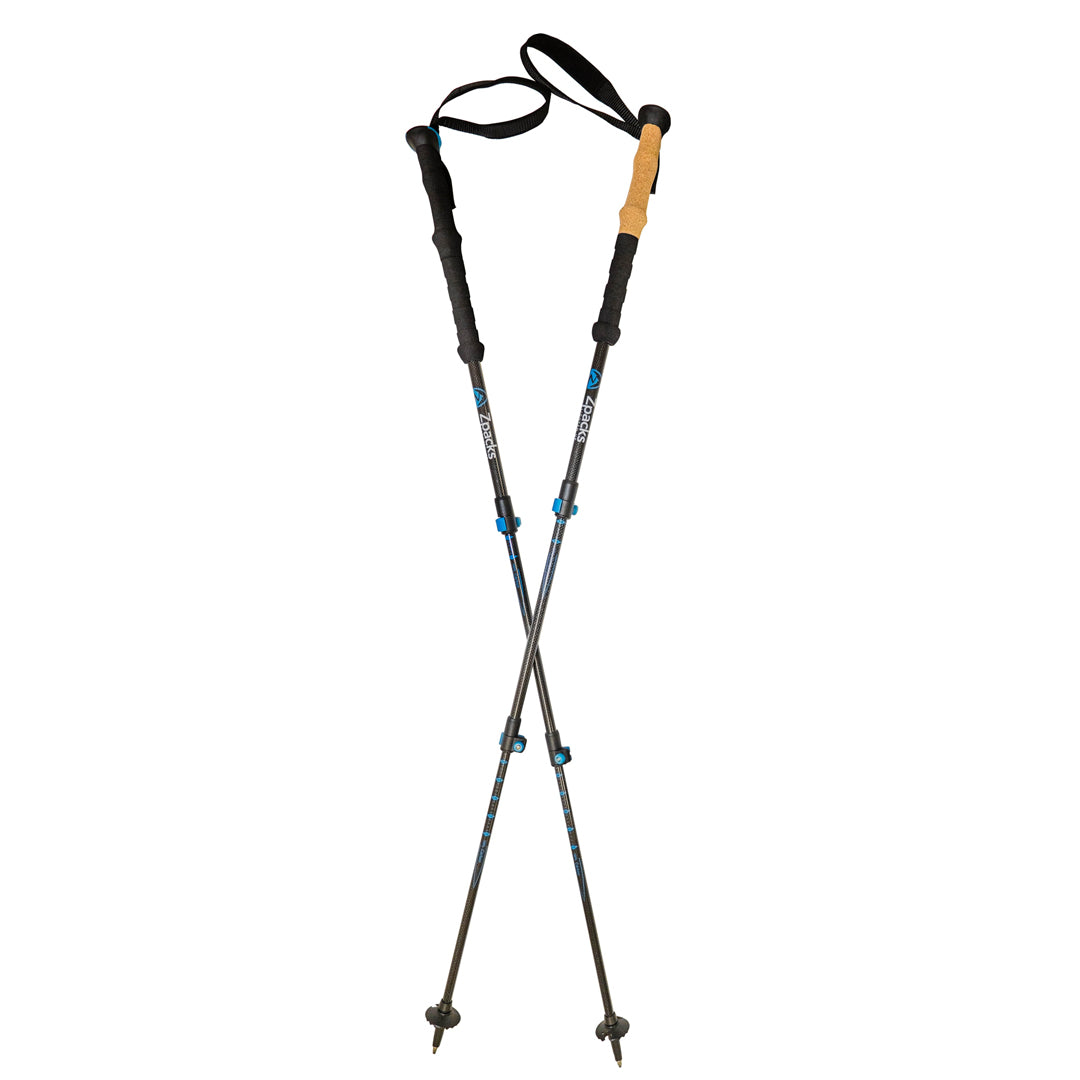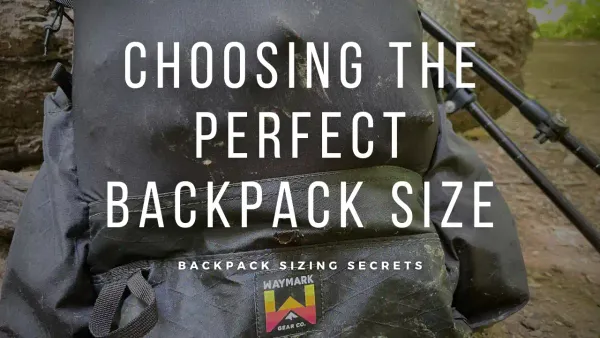Trekking vs Hiking Poles: Choose Your Perfect Trail Companion
Discover the crucial differences between trekking and hiking poles. Learn how to choose the right support for your next thruhiking adventure, from grip types to terrain suitability.

When you're planning your next outdoor adventure, you might find yourself wondering whether to select trekking poles or hiking poles. While these terms are often used interchangeably, there are subtle yet significant differences between the two. Your choice can greatly impact your thruhiking experience, from the stability you'll have on challenging terrain to the weight you'll carry in your pack.
Understanding these distinctions is essential for selecting the right equipment for your specific needs. As you evaluate your options, you'll discover that the seemingly small variations between trekking and hiking poles can make a world of difference on the trail.
Trail-Ready Insights: Your Pole-Picking Cheat Sheet
- Trekking poles are designed for challenging terrain, while hiking poles suit casual walks on well-worn trails.
- Trekking poles are sold in pairs and adjustable, whereas hiking poles are often singular and fixed-length.
- Trekking poles feature shock-absorption and specialized tips for grip, essential for rugged environments.
- Trekking poles prioritize functionality with cork grips and ergonomic design, while hiking poles focus on basic support.
- Trekking poles offer customizable length for varied terrains, but are heavier than the more portable hiking poles.
Design Face-Off: How Trekking and Hiking Poles Differ

When you're gearing up for your next outdoor adventure, you might wonder about the difference between trekking poles and hiking poles. The distinction lies in their purpose and design, each crafted to enhance your journey in unique ways.
Trekking poles, sold in pairs, are the rugged companions you'll want for challenging terrain. They're your assistance on steep ascents and treacherous descents, offering stability that'll make you feel like a mountain goat.
These versatile tools are adjustable in length, allowing you to conquer varied surroundings with ease. With shock-absorbing features and specialized tips, they're ready to tackle anything from loose scree to icy paths.
In contrast, hiking poles, often singular in nature, are perfect for casual strolls and light hikes. They're more a gentle friend you'll lean on while enjoying peaceful walks through sun-dappled forests.
While simpler in design, they still offer that reassuring touch of balance as you meander along well-worn trails. These fixed-length poles are ideal for those moments when you just need a bit of extra support, without the full-body engagement of their trekking counterparts.
Weight Wars: Trekking vs Hiking Poles for Your Pack
Two key factors to contemplate when choosing between trekking and hiking poles are weight and portability. As you begin your outdoor adventures, the heft of your gear can make or break your journey.
Trekking poles, built for rugged terrain and challenging expeditions, often tip the scales at 18-22 oz per pair for aluminum models. You'll feel their sturdy presence in your hands, ready to support you on treacherous paths and steep inclines.
Conversely, hiking poles, your lightweight companions for casual trails, can weigh as little as 12 oz per pair, barely noticeable as you stride along sun-dappled forest paths.
The material of your poles dramatically influences their weight and portability. Aluminum trekking poles, while heavier, stand strong against rocky obstacles and unforgiving environments.
Carbon fiber alternatives offer a feather-light choice but might falter under extreme stress. Hiking poles, especially those designed for trail running, collapse effortlessly into your pack, their minimal weight a blessing on long treks.
Trekking poles, with their adjustable lengths and shock-absorbing features, sacrifice some portability for enhanced functionality, ready to tackle whatever nature throws your way.
Terrain Tactics: Selecting the Poles That Suit Your Trail

As you venture into the great outdoors, choosing the right pole for your terrain is essential. Trekking poles, with their sturdy design and specialized features, are your premier companions for conquering rugged terrains. These resilient allies provide unparalleled stability on steep inclines and treacherous descents, allowing you to navigate challenging trails with confidence.
When it comes to terrain suitability, trekking poles reign supreme:
- Adjustable length for customized support on varied terrain
- Specialized tips for enhanced grip on slippery surfaces
- Shock-absorbing mechanisms to reduce impact on joints
- Durability to withstand the harshest outdoor conditions
As you push your limits on mountain trails, feel the rush of adrenaline coursing within your veins. Your trekking poles become extensions of your arms, gripping the earth with tenacity as you ascend rocky slopes.
With each step, you'll appreciate the adjustable length, allowing you to shorten the poles for uphill climbs and lengthen them for heart-pounding descents. The specialized tips dig into loose gravel and icy patches, providing the traction you need to conquer nature's obstacles.
Grip Showdown: Trekking vs Hiking Pole Handle Materials
The grip of your pole can make or break your outdoor adventure. As you set out on your journey, the feeling of your hand wrapped around the perfect grip material can be the difference between conquering that challenging trail or struggling every step of the way.
Hiking poles foam options provide a soft touch but could falter in wet conditions. Choose wisely, adventurer, for the right grip will be your steadfast companion on the trail, guiding you on treks to breathtaking vistas and heart-pounding challenges alike.


Flexibility Factor: Adjustability in Trekking vs Hiking Poles
Moving from grip to length, you'll find that adjustability sets trekking poles apart from their hiking counterparts. Trekking poles offer a remarkable range of 24 to 55 inches, allowing you to customize your poles to match the terrain and your personal needs. This adaptability is essential for maintaining proper posture and maximizing efficiency on your adventures.
When selecting adjustable trekking poles, consider these key factors:
- Ideal length: Aim for a 90-degree elbow angle when the tips touch the ground
- Uphill adjustments: Shorten poles by 5-10 cm for better advantage
- Downhill adjustments: Lengthen poles for improved balance and support
- Locking mechanisms: Choose between twist locks or lever locks for secure adjustments
As you navigate challenging trails, you'll appreciate the flexibility to fine-tune your pole length.
Then, as you descend a treacherous slope, extend your poles to maintain stability and confidence with each step. Adjustable trekking poles become an extension of your body, adapting to your ever-changing surroundings and enhancing your hiking experience in ways fixed-length hiking poles simply can't match.







